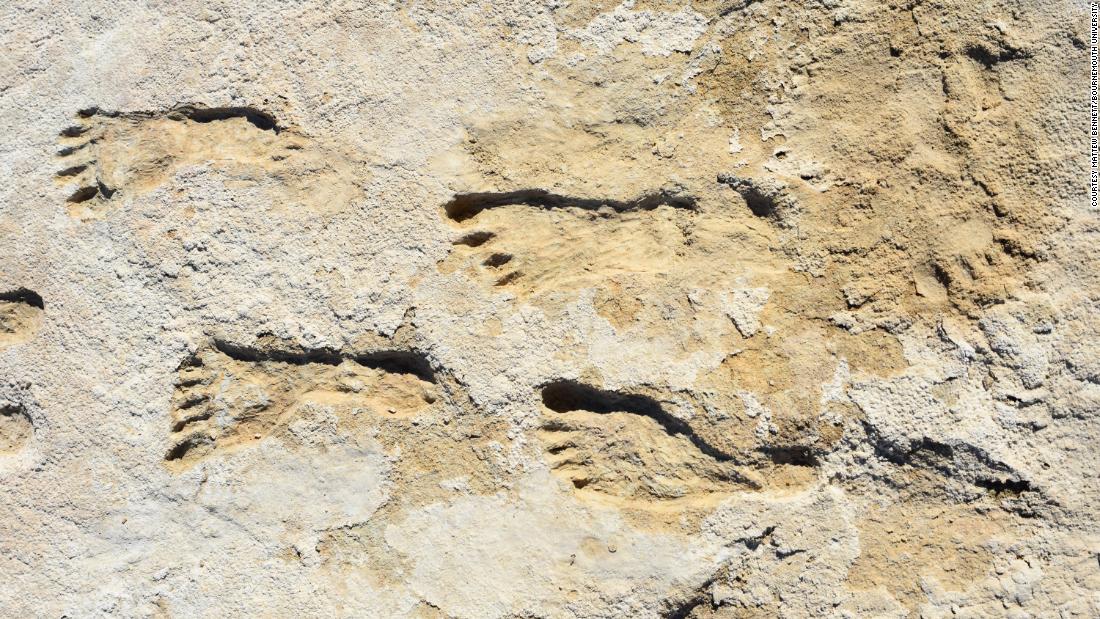Now, researchers studying fossilized human footprints in New Mexico say they have the first unequivocal evidence that humans were in North America at least 23,000 years ago.
“The peopling of the Americas is one of those things that has been for many years very contentious and a lot of archeologists Views with almost religious zeal,” said Matthew Bennett, a professor and specialist in ancient footprints at Bournemouth University and author of a study on the new findings that published in the journal Science on Thursday.
“One of the problems is that there is very few data points,” he added.
‘Unequivocal’
The timing and location of the prints in southwestern North America suggests that humans must have been on the continent much earlier than previously thought, Bennett said. The people who made the footprints — mostly teenagers and children — were living in New Mexico at the height of the last Ice Age.
Between 19,000 and 26,000 years ago, a period known as the Last Glacial Maximum, two massive ice sheets covered the northern third of the continent and reached as far south as New York City, Cincinnati and Des Moines, Iowa. The ice and cold temperatures would have made a journey between Asia and Alaska impossible during that time, meaning the people who made the footprints likely arrived much earlier.
“It’s the first unequivocal site and a good data point that places people in the American southwest around the last glacial maximum,” Bennett said.
“That’s the important point because it allows you to look at the older sites, the more controversial sites, with a different light.”
David Rachal, a geoarchaeology consultant who has worked with the human and animal trackways in the Tularosa Basin for eight years, said the footprint dates provided by Bennett and his team looked “extremely solid,” with seeds providing very reliable and precise ages through radiocarbon dating.
“Plus, these dates come from seed layers located above and below the trackway surface, which brackets the track-forming event. You could not ask for a better setup,” said Rachal, who was not involved in the study.
However, he said it was puzzling that no artifacts, such as stone tools, had been found in the area.
“These tracks suggest that people were in New Mexico way earlier than expected. This is a theme that is gaining some serious traction in the literature. However, we need to be cautious and more research needs to be done before we start doing a lot of arm waving,” Rachal said.
Kids and teens
The footprints were likely made in soft ground at the edge of a wetland. Wind probably blew dust over the surface, silting in the prints, Bennett said.
Hunter-gatherers, he said, would have done a lot more than 10,000 steps a day, meaning at least a few footprints would survive in the fossil record.
The analysis of the dimensions of the footprints suggested they were made by children between 9 and 14 years old — a pattern that’s seen at other fossilized footprint sites. Tracks of mammoths, giant ground sloth, dire wolves and birds are all present at the site as well.
“One hypothesis for this is that division of labor, in which adults are involved in skilled tasks whereas fetching and carrying are delegated to teenagers,” the study noted.
“Children accompany the teenagers, and collectively they leave a higher number of footprints that preferentially recorded in the fossil record.”
Source link



